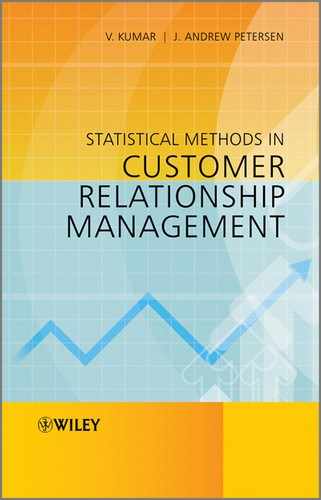Preface
Companies invest millions of dollars in Customer Relationship Management (CRM) systems and strategies. The primary objectives of these systems are to (a) acquire profitable customers, (b) retain profitable customers, (c) prevent profitable customers from migrating to competition, and (d) winning back ‘lost’ profitable customers. These four objectives collectively lead to increasing the profitability of an organization. While most firms recognize the benefits of establishing CRM systems and strategies, not all firms have been successful in their CRM implementations. So, why did they fail?
Traditional marketing theory and practice have always recommended that a company focus on expanding the customer base will lead to increased profitability. But, what about retaining the customers? Additionally, what about preventing customers from churning and winning back ‘lost’ customers? This book, at its core, explores these topics that are an integral part of the customer management process. Information and understanding these topics will contribute towards an enhanced financial performance of companies. Companies such as IBM, Zappos, Continental Airlines, Henkel, and Hewlett-Packard have understood the importance and relevance of all these four customer management topics as they apply to their organizations, thereby becoming leaders in their respective domains through the implementation of CRM programs. In order to understand the managerial relevance of these four customer management topics and successfully implement CRM systems, it is important to understand the engines that drive these systems – the quantitative models.
This book focuses on the quantitative and modeling aspects of customer management strategies that lead to future firm profitability. The book stresses on developing an understanding of the statistical models used in CRM applications as the guiding concept for profitable customer management. To understand and explore the functioning of models used in CRM applications, this book traces the management strategies throughout a customer's tenure with a firm. Specifically, the book will review five sets of models that will facilitate effective customer management strategy development and CRM implementation. They are:
The above-mentioned five sets of models – customer acquisition, customer retention, customer acquisition and retention, customer churn, and customer win-back – form the core of this book. Apart from covering these models, the book will also investigate the need for such CRM models, review the implementation of these models, and look into the future of these models.
